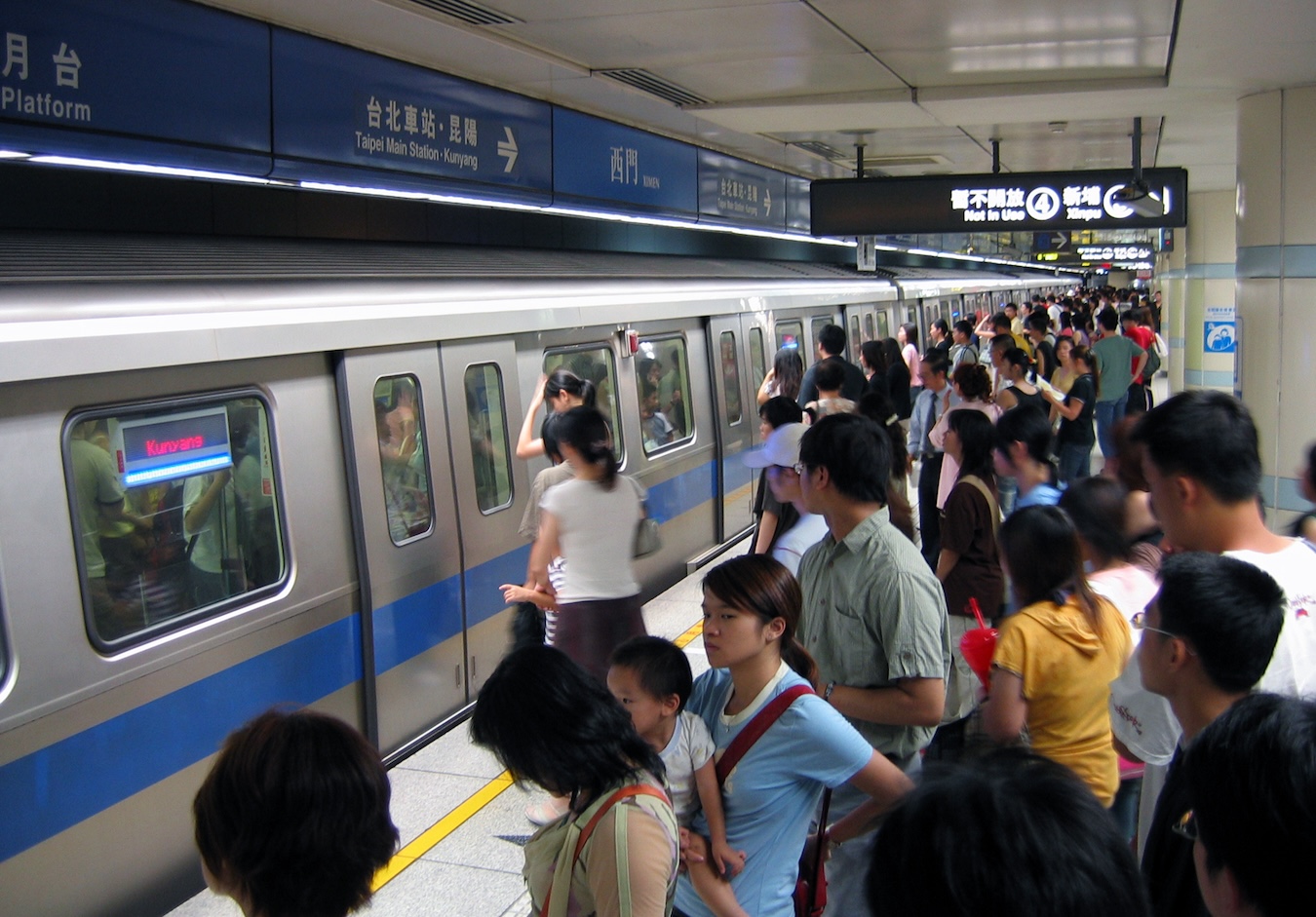by Brian Hioe
語言:
English
Photo Credit: Richy/WikiCommons/CC BY-SA 3.0
THE ISSUE OF priority seats, specified by law as for “disabled, elderly, women and children,” is again in the news after two violent incidents on the Taipei MRT. Laws currently specify that priority seats be no less than 15% of all available seating on public transportation.
In the first incident, a 25-year-old woman refused to yield her seat to an 80-year-old woman who confronted her for the seat, citing that she was exhausted after a 12-hour shift. The 25-year-old woman later appeared to assault an 80-year-old man who argued with her in the exchange.
All three passengers agreed not to file charges after MRT staff intervened. Subsequently, the 25-year-old woman appeared to be in emotional distress and began hitting her head against a pillar in the MRT station until she began bleeding.
In the second incident, a 29-year-old man refused to vacate a seat when confronted by a 75-year-old woman, citing that he had diarrhea. The man was then slapped by the woman, leading other riders to get involved.
This is not the first time that there has been a public dispute regarding priority seating in the MRT. There have been repeated such incidents in past decades, which are then reported on widely in the news, leading to a discussion of whether priority seats cause more social divisions than they are worth.
A contributing factor in the recurrence of such news stories is how Taiwanese news disproportionately focuses on incidents of public violence, as seen in the prevalence of dashcam footage and security camera footage in news stories. To this extent, with the rise of social media and the widespread contemporary use of smartphones, it is possible for incidents to be filmed in such a manner that leads to public shaming. This has long led to concerns that individuals using a priority seat could potentially face shaming on social media.
Still, another undercurrent in the two incidents is generational tensions between the young and old in Taiwan. With the declining birthrate and rising elderly population, Taiwan is on the verge of becoming a “super-aged” society.
At the same time, young people face harsh economic conditions, such as a housing market in which to own a home requires one to not eat or drink for fifteen years in Taipei. And for much of the last decade, university graduates made “22k” salaries that were barely enough to scrape by.
 Photo credit: Richy/WikiCommons/CC BY-SA 3.0
Photo credit: Richy/WikiCommons/CC BY-SA 3.0
This compares unfavorably to the economic resources that the Boomer parents of today’s Millennials and Gen Z had. It may not be surprising then that some young people come to resent the economic privilege of the elderly, even as it may be the elderly that burden social resources such as the National Health Insurance system.
At times, this also dovetails with concerns regarding Taiwan’s future, particularly regarding older individuals who politically support the KMT or other conservative political parties, and may come to be seen by young people as willing to sell out Taiwan’s future as a result of their Chinese nationalism. Indeed, several years prior, the KMT had less than 10,000 members under 40. Likewise, identity trends show rising Taiwanese identity, especially among the young.
This, then, is perhaps what undergirds the political controversy regarding priority seats on the MRT and other forms of public transportation. To this extent, while traditional Confucian social values–as self-evident in that priority seats are referred to as “universal love” (博愛座) seats in Chinese, referring to the traditional Confucian value outlined in the Classic of Filial Piety and other texts–moralistic deference to the elderly may not necessarily be the social hierarchy that young people view as the most equitable.
The legislature has proposed adding “those with other actual needs” as a legal amendment about who is allowed to sit in priority seats. These incidents take place after several campaigns by the Taipei MRT to highlight that individuals may not have visible needs, but are still justified in using priority seats. Clearly, such campaigns have not been successful, and priority seats are mostly still seen as for the elderly.
It is to be seen if this redresses the controversy. Still, while animosity between the young and old undergirds how and why this controversy about priority seats continuously recurs, one notes that there has failed to be any true discussion about disability in the recurrent debates about who is justified in using priority seats. Rather, the discussion is always regarding young versus old–something that in itself is telling about the priorities of Taiwanese society.

